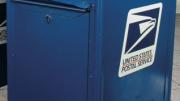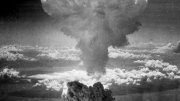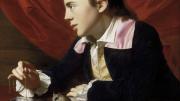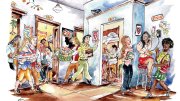In an era of headphone-wearing, smart-phone-watching pedestrians, utterly unattuned to their surroundings, Tony Hiss ’63 makes the case for mindful, aware attention to one’s environs--even the most ordinary ones. His new manifesto, In Motion: The Experience of Travel (Knopf, $26.95), follows by many years--and generations of enabling, distracting technology--his The Experience of Place (and his beloved New Yorker railroad wanderings, with Rogers E. M. Whitaker, collected as All Aboard with E. M. Frimbo). From the beginning of chapter 1, “Deep Travel,” a revelation outside the front door:
Although I was only leaving the house for a few minutes and only to run a few errands (mail a couple of bills; pick up an iced coffee at the local bagel shop), and although it was a perfectly ordinary day, like hundreds of others that unfold in any year, year after year, something was no longer the same. Before the door had even closed behind me, the familiar world outside immediately seemed--unexplored. That comes closest to describing the unexpected sensation that had arrived. “Fresh” and “new” were part of it, but only a part, even though there were undoubtedly now some things present that hadn’t ever previously appeared on my block, such as the particular play of light on the buildings across the street, and the array of zigzaggy clouds in the sky overhead, and the patterns formed by the various groups of people walking by.
But it was the familiar objects, the ones that were still what they had always been, that seemed the most transformed. It wasn’t as if they had changed shape or color, but they now seemed charged with purpose, beckoning, calling out, and almost glowing or shimmering, with each detail etched in the sharpest kind of focus. Each thing I looked at seemed now to have a story curled inside it, and to represent something that many people from many places and times had thought about over long periods and with great care and deliberation and a kind of intelligence that takes generations to accumulate and then get sifted through and refined and pared down. The corner mailbox, for instance. I live in Greenwich Village, in New York City--have done so for most of my life--and the corner mailbox has been there for as long as I can remember.
Battered, blue, durable, unprepossessing--already obsolete some might say. Square on the bottom with a rounded top and a squeaky pull-down handle that needs a certain decisiveness to open and close, it was something I’ve often used but had never at any time given the kind of close examination that it in fact--what? needed; deserved; wanted? Wanted--that seemed as close to it as anything. I was at the moment wide-awake in a way that reached out in all directions. Awareness and attention had been intensified, reorganized, redeployed, and I was abruptly eager to know more.









